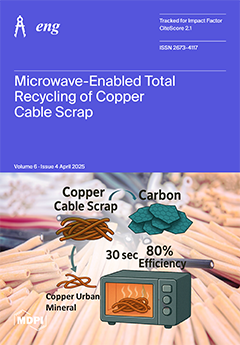Ensuring the overall efficiency of hydraulic fracturing treatment depends on the ability to forecast bottomhole pressure. It has a direct impact on fracture geometry, production efficiency, and cost control. Since the complications present in contemporary operations have proven insufficient to overcome inherent uncertainty,
[...] Read more.
Ensuring the overall efficiency of hydraulic fracturing treatment depends on the ability to forecast bottomhole pressure. It has a direct impact on fracture geometry, production efficiency, and cost control. Since the complications present in contemporary operations have proven insufficient to overcome inherent uncertainty, the precision of bottomhole pressure predictions is of great importance. Achieving this objective is possible by employing machine learning algorithms that enable real-time forecasting of bottomhole pressure. The primary objective of this study is to produce sophisticated machine learning algorithms that can accurately predict bottomhole pressure while injecting guar cross-linked fluids into the fracture string. Using a large body of work, including 42 vertical wells, an extensive dataset was constructed and meticulously packed using processes such as feature selection and data manipulation. Eleven machine learning models were then developed using parameters typically available during hydraulic fracturing operations as input variables, including surface pressure, slurry flow rate, surface proppant concentration, tubing inside diameter, pressure gauge depth, gel load, proppant size, and specific gravity. These models were trained using actual bottomhole pressure data (measured) from deployed memory gauges. For this study, we carefully developed machine learning algorithms such as gradient boosting, AdaBoost, random forest, support vector machines, decision trees, k-nearest neighbor, linear regression, neural networks, and stochastic gradient descent. The MSE and R
2 values of the best-performing machine learning predictors, primarily gradient boosting, decision trees, and neural network (L-BFGS) models, demonstrate a very low MSE value and high R
2 correlation coefficients when mapping the predictions of bottomhole pressure to actual downhole gauge measurements. R
2 values are reported as 0.931, 0.903, and 0.901, and MSE values are reported at 0.003, 0.004, and 0.004, respectively. Such low MSE values together with high R
2 values demonstrate the exceptionally high accuracy of the developed models. By illustrating how machine learning models for predicting pressure can act as a viable alternative to expensive downhole pressure gauges and the inaccuracy of conventional models and correlations, this work provides novel insight. Additionally, machine learning models excel over traditional models because they can accommodate a diverse set of cross-linked fracture fluid systems, proppant specifications, and tubing configurations that have previously been intractable within a single conventional correlation or model.
Full article





